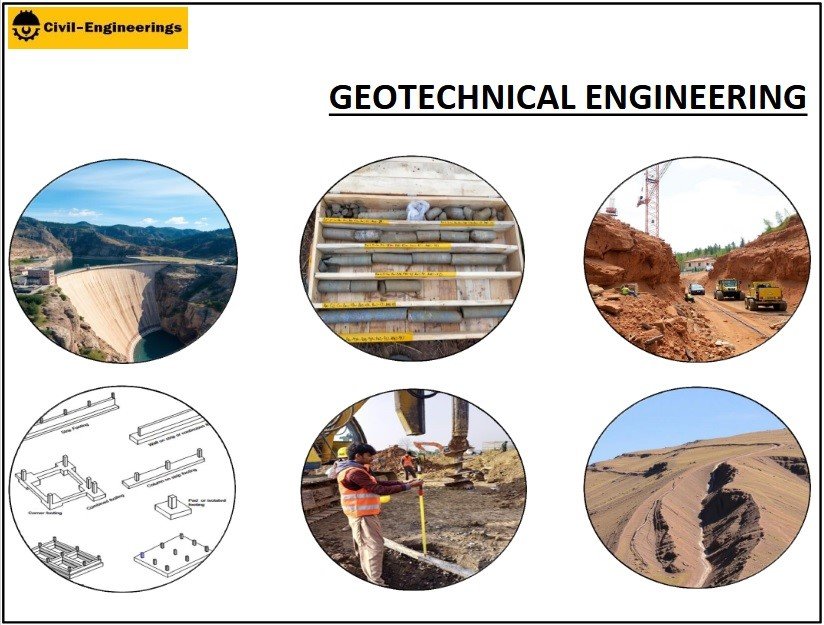How Geotechnical Engineering For Construction Projects can Save You Time, Stress, and Money.
The 20-Second Trick For Geotechnical Engineering For Construction Projects
Table of ContentsGeotechnical Engineering For Construction Projects Fundamentals ExplainedSome Known Questions About Geotechnical Engineering For Construction Projects.Geotechnical Engineering For Construction Projects for DummiesGeotechnical Engineering For Construction Projects for DummiesNot known Facts About Geotechnical Engineering For Construction ProjectsThings about Geotechnical Engineering For Construction Projects
The role of geotechnical engineering dramatically handles recognizing the features of dirt and rock, which might vary substantially by their density, dampness content etc. These features must be taken a look at by geotechnical designers to anticipate their motions under numerous conditions. The security as well as security of frameworks are influenced by dirt problems, making this evaluation required.A geotechnical designer will examine dirt to figure out the bearing capacity of the planet and advise correct structure types, such as shallow foundations, deep structures like stacks, or specialized services like drifting foundations for soft soils. Understanding the features and actions of dirt and rock, in enhancement to just how they engage with buildings that have actually been put up on or within them, is just one of the key explanations for why geotechnical design is necessary.
Environmental defense is accomplished with geotechnical design. Experience in air, water, and soil high quality upkeep is placed to use by geotechnical designers to decrease the negative impacts of projects.
To sum up, geotechnical engineering is an important self-control that protects the durability and honesty of civil infrastructure. Geotechnical designers add to making building tasks reliable all over the world by comprehending the behaviour of planet products and applying appropriate preparation approaches.
All about Geotechnical Engineering For Construction Projects
The fundamental security of any job is necessary. Geotechnical engineering plays a vital function in making certain that frameworks are improved solid ground, essentially and figuratively. By examining soil, rock, and subsurface conditions, geotechnical designers supply necessary understandings that aid in the design, building, and upkeep of structures and infrastructure.
The Ultimate Guide To Geotechnical Engineering For Construction Projects
Research laboratory screening: Establishing the buildings of dirt and rock. Area testing: Carrying out examinations on-site to assess conditions. Evaluation and layout: Using information to design foundations, preserving walls, tunnels, and other frameworks. Numerous high-profile building jobs have successfully used geotechnical engineering to ensure their security and safety and security. :: The world's highest building called for a deep understanding of the underlying geology.

As a leader in geotechnical engineering, BECC Inc. is dedicated to delivering cutting-edge and efficient services that meet the highest requirements of quality and safety and security., a mechanical engineer and rock hound.
The Of Geotechnical Engineering For Construction Projects
Terzaghi also created the framework why not try here for concepts of birthing ability of structures, and the concept for prediction of the rate of settlement of clay layers because of consolidation. Later on, Maurice Biot completely established the three-dimensional dirt consolidation concept, expanding the one-dimensional version previously established by Terzaghi to extra basic theories and introducing the set of basic formulas of Poroelasticity.
Geotechnical engineers explore and identify the residential or commercial properties of subsurface conditions and products. They likewise make equivalent earthworks and retaining structures, passages, and framework structures, and might supervise and assess sites, which might better entail website surveillance along with the threat analysis and mitigation of natural hazards - Geotechnical Engineering for Construction Projects. Geotechnical designers and design geologists carry out geotechnical examinations to get details on the physical homes of dirt and rock hidden and beside a site to design earthworks and foundations for proposed structures and for the repair work of distress to earthworks and frameworks brought on by subsurface conditions.
Fascination About Geotechnical Engineering For Construction Projects
, which makes use of a thick-walled split spoon sampler, is the most common way to collect disturbed samples.

If the interface between the mass and the base of a slope has an intricate geometry, incline stability evaluation is challenging and numerical service techniques are needed. Normally, the interface's exact geometry is unidentified, and a streamlined interface geometry is presumed. Finite use this link slopes call for three-dimensional designs to be analyzed, so most slopes are assessed presuming that they are definitely large and can be represented by two-dimensional models.
The 3-Minute Rule for Geotechnical Engineering For Construction Projects
The observational technique may be defined as follows: General exploration enough to establish the harsh nature, pattern, and properties of down payments. Evaluation of one of the most likely conditions and one of the most unfavorable imaginable inconsistencies. Developing the style based upon a functioning hypothesis of actions prepared for under the most likely conditions. Selection of quantities to be observed as building and construction profits and determining their anticipated values based upon the working hypothesis under the most negative conditions.
Dimension of quantities and examination of real conditions. It is improper for tasks whose design can not be changed during construction.